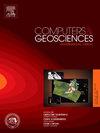用正弦模型估计地质资料的偏心曲线
IF 4.2
2区 地球科学
Q1 COMPUTER SCIENCE, INTERDISCIPLINARY APPLICATIONS
引用次数: 0
摘要
从地质资料中估计偏心率曲线是很重要的,因为它可以作为构造地质时标的基础,或推断太阳系过去的轨道演变。由于多种原因,如年龄深度扭曲、对日照的非线性响应和各种其他扰动源,这种估计可能具有挑战性。本文提出了一种利用地质时间序列对天文分量估计模型(ACEv.1)进行有针对性修改的估算偏心波形的新方法。我们表明,分析单个岁差分量对理解摄动对估计量的影响非常有益。结果表明,在无噪声的环境中,单个岁差分量是相当平稳的。虽然扰动的存在改变了相应波形的形态,但单个波形的均方根大致保持不变。这一发现允许对单个岁差分量进行简单的调整,从而使它们几乎没有噪声。这种方法提供了高保真的进动波形,我们可以从中估计偏心。此外,我们对合成和真实地质数据进行了基准研究,评估了所提出方法与文献中三种最先进方法的性能。修改后的ACEv。1种型号,这里命名为ACEv。2 -在已知年龄深度模型和岁差频率的情况下,在对已知偏心解的拟合优度方面优于参考方法。旋回地层学研究往往缺乏与其他方法的比较;因此,我们相信本研究可以增强用户对参考方法如何处理地质信号中的摄动的理解。本文章由计算机程序翻译,如有差异,请以英文原文为准。
Eccentricity curve estimation from geological data using sinusoidal modeling
The estimation of eccentricity curves from geological data is important as it can be used as a basis for the construction of geological timescales, or making inferences of past orbital evolutions of the Solar System. Such estimation can be challenging for multiple reasons like age-depth distortions, non-linear responses to insolation and various other sources of perturbation. We present a novel approach to estimating the eccentricity waveform from geological time series by targeted modifications to the Astronomical Component Estimation model (ACEv.1). We show that analyzing individual precession components is highly beneficial in understanding the impact of perturbation on the estimator. It turns out that individual precession components are fairly stationary in noise-free environments. Although the presence of perturbation modifies the morphology of the corresponding waveforms, the root-mean-square of individual waveforms remains approximately unchanged. This finding allows for a simple adjustment of individual precession components, that renders them almost noise-free. Such an approach provides a high-fidelity precession waveform, from which we can estimate the eccentricity. Furthermore, we provide a benchmark study on both synthetic and real geological data, which assess the performance of the proposed method against three state-of-the-art methods from the literature. The modified ACEv.1 model – here named ACEv.2 – outperforms the reference methods in terms of goodness-of-fit to the known eccentricity solutions in the case of a known age-depth model and precession frequencies. Cyclostratigraphic studies often lack comparisons to other methods; therefore, we believe this study could enhance users' understanding of how the reference methods handle perturbations in geological signals.
求助全文
通过发布文献求助,成功后即可免费获取论文全文。
去求助
来源期刊

Computers & Geosciences
地学-地球科学综合
CiteScore
9.30
自引率
6.80%
发文量
164
审稿时长
3.4 months
期刊介绍:
Computers & Geosciences publishes high impact, original research at the interface between Computer Sciences and Geosciences. Publications should apply modern computer science paradigms, whether computational or informatics-based, to address problems in the geosciences.
 求助内容:
求助内容: 应助结果提醒方式:
应助结果提醒方式:


